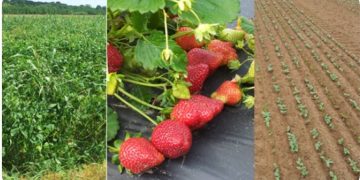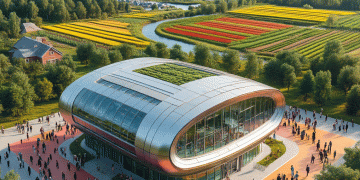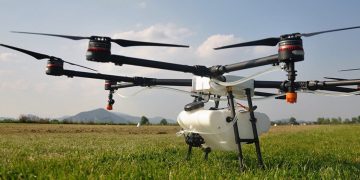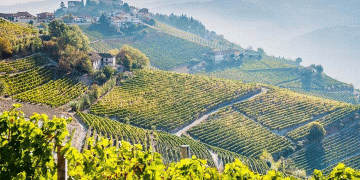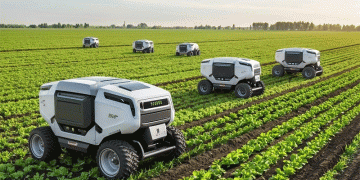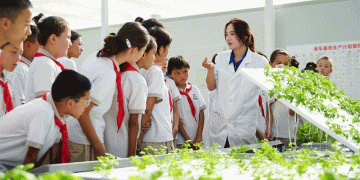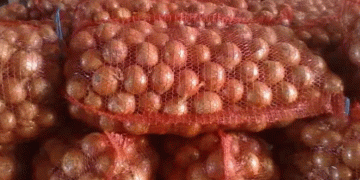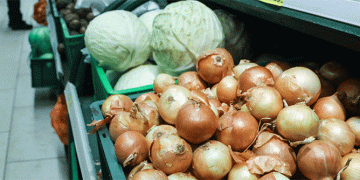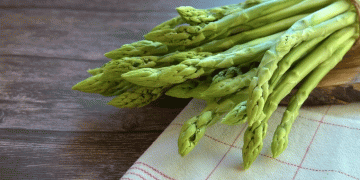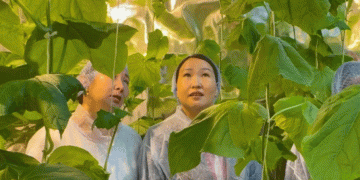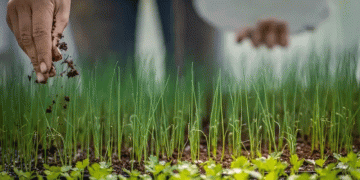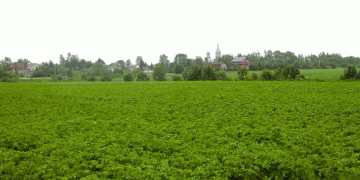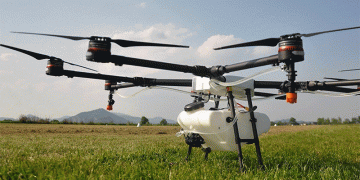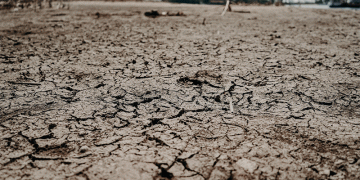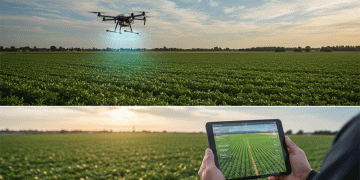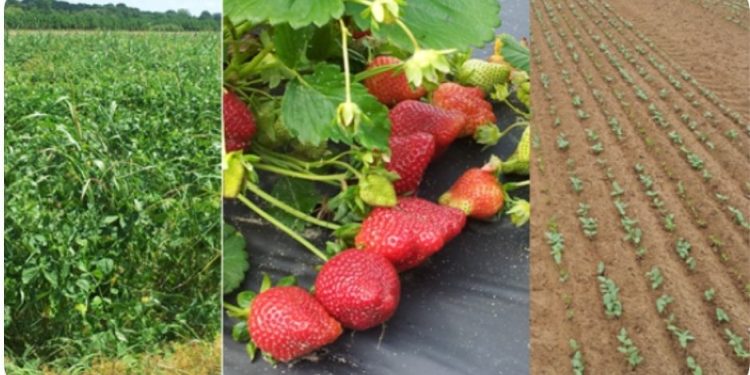Researchers have seen mixed results in the first two years of trials studying the impact of soil management practices on strawberry production.
Amanda McWhirt, horticulture Extension specialist at the University of Arkansas, presented the findings thus far during the recent Southeast Regional Fruit & Vegetable Conference. She spoke as part of the North American Strawberry Growers Association annual meeting, held as part of the proceedings in Savannah, Georgia. McWhirt was a horticulture science graduate research assistant at North Carolina State University at the time the study was conducted.

“Our research project sought to evaluate whether soil management practices that are aimed at improving soil health (sustainable soil management practices) can have an impact on yields, fruit quality and measures of soil health in both traditionally fumigated and non-fumigated strawberry production systems,” she said.
Practices evaluated were: compost applied at 7.5 tons per acre; a summer cover crop of 100 pounds of cowpea plus 10 pounds pearl millet; plug plant inoculation with vermicompost and native arbuscular mycorrhizal fungi (AMF); and various combinations of these practices including compost plus cover crops and compost plus cover crops plus plug inoculation.
These treatments were applied in both fumigated (Pic-Clor 60) and non-fumigated plasticulture systems.
The main research questions were:
- When compared between the two fumigation systems, what effect do these practices have on yield, fruit quality and measures of soil health?
- Can good soil microbes be reintroduced into fumigated systems via plug inoculation?
The study was conducted over the 2014 and 2015 seasons at the Center for Environmental Farming Systems (CEFS) in Goldsboro, North Carolina.
“We also worked with five farmers to explore the use of inoculated plugs on their farms; one of these also initiated a wide range of sustainable soil management practices in association with the project,” McWhirt said.
All research station plantings used the Chandler strawberry cultivar, while farms raised a variety of cultivars.
Project members were McWhirt, Michelle Schroeder-Moreno, Gina Fernandez, Yasmin Cardoza and Hannah Burrack.
“We’re specifically looking at compost, summer cover crop and beneficial soil inoculants added to the strawberry plug,” she said.
“The goal in doing this study was to evaluate the incorporation of these production practices into both fumigated and non-fumigated strawberry plasticulture production, to see if we need to be making specific recommendations about the effects of these practices, both on yield and also on soil health within different fumigation systems,” she said.
“Over the two-year study, we did see that certain practices did tend to yield better in the fumigated systems, and other practices yielded better in the non-fumigated systems,” she said. “Within the fumigated system, cover crops tended to yield the highest, whereas plug inoculation techniques seemed to have the biggest impact on increasing yields in the non-fumigated system. We did see that compost had an impact on increasing certain measures of soil fertility, specifically pH in kind of an exchange capacity.
“We didn’t see that there were any physical changes to the soil after two years, so there is no changes to aggregate stability or organic matter. We did see some interesting results regarding biological aspects of soil health. Particularly, we’re using the plug inoculation technique sort of with the idea that we could reintroduce these good soil microorganisims into the fumigated system. And we monitored that by looking at our microbiological fungi in the strawberry roots.
“Basically, what we saw is we weren’t able to reestablish mycorrhizal fungi back into the fumigated system,” McWhirt said. “So our plug inoculation technique didn’t work for that reason.
“At the end of the second field season, we wanted to evaluate total soil microbial populations, and we did see that there was a really big effect of fumigation on still reducing microbial activity, even as much as eight months after the last fumigation event,” she said. “We didn’t see that any production practice could mitigate that reduction. The plug inoculation compost and cover crop all had slightly higher microbial activity relative to the control in the fumigated system, but none of them re-established microbial activity at the same rate at what we saw in the non- fumigated system.
“Finally,” McWhirt said, “we did see some results where fumigation was actually having an effect on fruit quality, particularly shelf life and fruit flavor, where berries had certain measures of shelf life that were actually better when we were fumigating. But berries also had lower levels of brix and fruit sweetness when we were fumigating, particularly here in the Southeast, where the majority of our growers are marketing toward pick-your-own, and flavor is very important.
“So that reduction in flavor under a fumigated system might need to be something that growers need consider in the future,” she said. “Though we did see the application of compost could increase berry sweetness – whether we were fumigating or not – so that might be something growers can use.”

Effects on plant growth
There were no strong effects of the soil management practices on plant growth, except for with plug inoculation. In both years, plug inoculation led to larger plugs at the time of planting, and in 2015, inoculated plugs had a larger root system in the non-fumigated plots as measured at five different points during the spring season. Fumigation increased crown weights in 2014, and overall plant size in 2015.
Yield results
“In both years, we observed that certain management practices impacted yield differently depending on whether they were used in fumigated or non-fumigated production,” McWhirt said.
In some cases, management practices had different effects on yield when combined with other practices. There did not, however, seem to be an additive effect, where if two practices performed well apart their effect was increased when the practices were combined.
“Soil management practices did not impact yields within each fumigation system in a consistent manner over the two years they were studied,” McWhirt said. “However, when averaged over the two years, plug inoculation yielded the highest in both fumigation systems, and cover crops alone yielded the highest in the fumigated system.”
Fruit quality results. Researchers only measured fruit flavor and shelf life in 2015, after pickers at the research station noted the non-fumigated berries “tasted sweeter” in 2014.
In order to verify this, researchers collected berries on three different dates during the 2015 season and evaluated them for shelf life and flavor. Fumigated berries had better quality after eight days in refrigerated storage than un-fumigated berries. Berries grown with compost alone had the highest brix levels.
Changes to soil health. Cover crops reduced summer weeds, and there was a slight additional reduction in weeds in those which also received compost, which may indicate more rapid cover crop establishment. Cover crop biomass was not different between plots that received compost prior to cover crop establishment and the non-compost plots.
Effects on soil stability, ability of the soil to resist erosion. After the second year, the non-fumigated plots had a higher measure of the soil being able to withstand erosion. Soil microbes contribute in part to this ability due to glue-like substances they excrete into the soil that bind soil particles together. Researchers are still investigating this result.
Effects on nematodes. In nematode sampling in late May and early June of both 2014 and 2015, there was no effect of fumigation or soil management practices on nematode populations.
Effects on soil microbial communities. In sampling the size of the soil microbial community in early June 2015, there was a significant effect of fumigation on reducing the soil microbial community. There was an effect of compost on increasing certain good microbes and reducing others in both the fumigated and non- fumigated system. In both years, compost and cover crops supplied sufficient pre-plant nitrogen.
See video on the impact of sustainable soil management practices in strawberry production.
— Gary Pullano, associate editor
